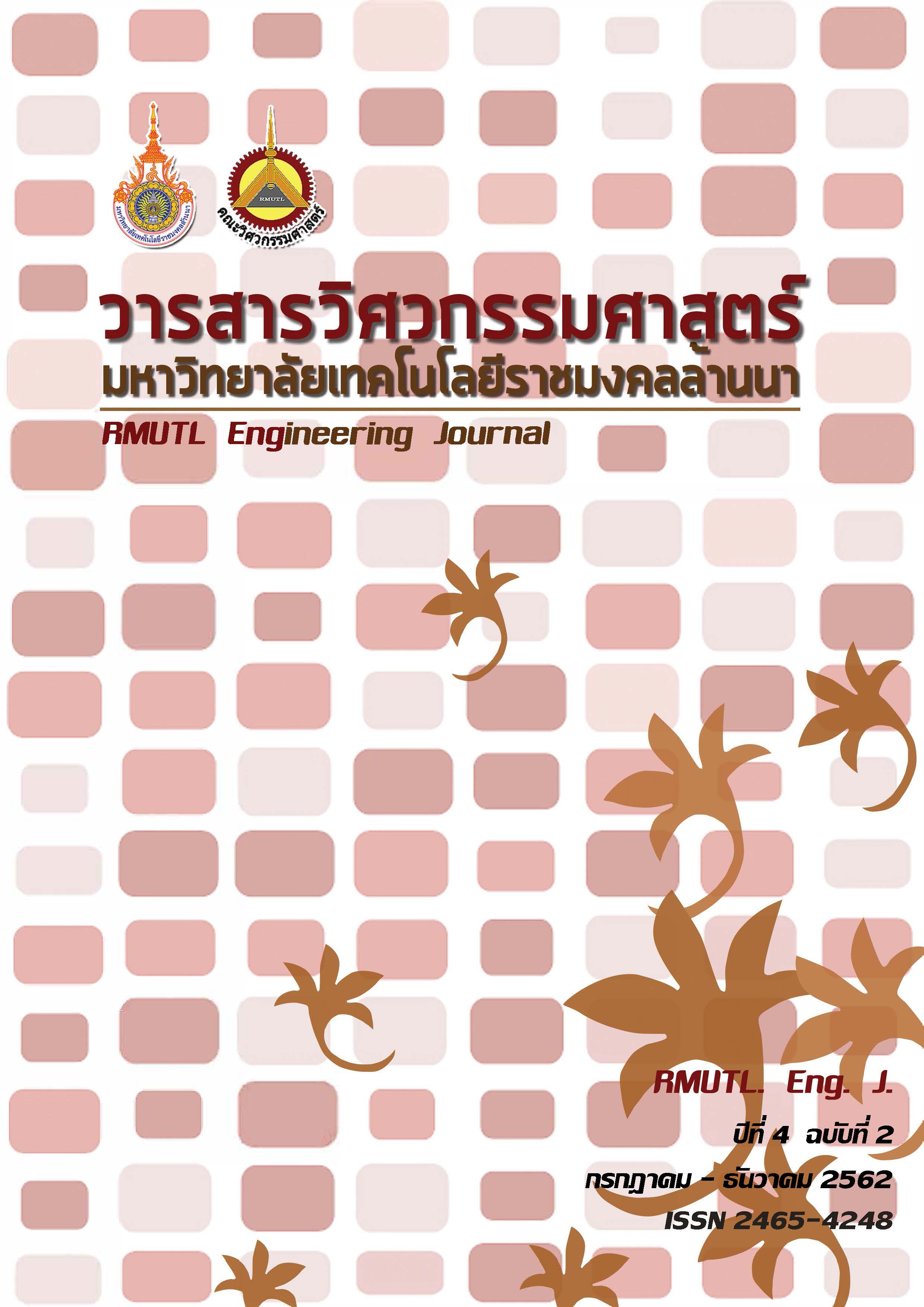The Solutions for Reducing the Plastic Flow Hesitation and Its Application for Solving the Defect of Auto Parts
DOI:
https://doi.org/10.14456/rmutlengj.2019.7Keywords:
flow hesitation, injection molding simulation, flow position difference, various part thickness designAbstract
The hesitation phenomena occur while the molten plastic flows into a cavity with variable thickness. When the molten plastic entering a cavity is filling a thin section and a thick section, the flow velocity of the molten plastic in each area is different, resulting in the flow position difference (FPD). When the flow hesitation happens, defects will occur on the part surface, such as weld line, air trap and short shot, etc. Therefore, the objective of this study was to present solutions for reducing the occurrence of hesitation phenomena by using various thickness design with difference thickness ratio (THK ratio) and injection speed to control the flow hesitation phenomena. Seven basic testing models with different THK ratio (1.2, 1.4, 1.6, 1.8, 2.0, 2.2 and 2.4) combine with different injection speeds were used for simulating. Through the simulation, different flow hesitation level (Flow Position Difference, FPD) could be computed. The engineering plastic material ABS was applied for the simulation testing to build up the database and produce the design guidelines. Eventually, the results of this study were used to solve the weld line issue caused by flow hesitation on the actual molding part. The study result showed that the THK ratio design was the main effect for the final FPD. The injection speed was a key parameter to reduce the FPD with different THK ratio. In the max THK ratio 2.4 design case, the FPD could be reduced by 70% (from 156.23 mm to 46.56 mm) by speed control. For the actual molding case of the motorcycle part, the serious weld line defect could be reduced about 69% by speed control solutions
References
=ZIf0VQNMon20820.pdf&file_basename=91-104%20%CA%C1%E0%A8%B5%B9%EC.pdf [Accessed 1st February 2019]
2. P. Guerrier, G. Tosello and J. H. Hattel. Flow visualization and simulation of the filling process during injection molding. CIRP-Journal of Manufacturing Science and Technology. 2017;16(12-20):12-20. Available from: doi:10.1016/j.cirpj.2016.08.002 [Accessed 4th February 2019
3. R. Surace, V. Bellantone, G. Trotta and I. Fassi. Replicating capability investigation of micro features in injection moulding process. Journal of Manufacturing Processes. 2017;28:351-361. Available from:doi:10.1016/j.jmapro.2017.07.004 [Accessed 4th February 2019]
4. E. Bociaga and T. Jaruga. Visualization of melt flow lines in injection moulding. Journal of Achievements in Materials and Manufacturing Engineering, 2006;18(1-2):331-334. Available from: www.researchgate.net/publication/42253312 [Accessed 1st February 2019]
5. Modex3D Team. 10 Real-World injection molding simulation case studies. Available from:https://kruseanalysis.com [Accessed 1st February 2019]
6. W. Menz and S. Dimov. 4M 2005 - First International Conference on Multi-Material Micro Manufacture. Elsevier Science Publishing;2005. p.107-110
7. A. Eladl, R. Mostafa, A. Islam, D. Loaldi, H. Soltan, H. N. Hansen and G. Tosello. Effect of Process Parameters on Flow Length and Flash Formation in Injection Moulding of High Aspect Ratio Polymeric Micro Features. Micromachines. 2018;9(2):58. Available from:doi:10.3390/mi9020058 [Accessed 4th February 2019]
8. J. Shoemaker, Moldflow Design Guide : A Resource for Plastics Engineers. Germany : Hanser Publishing;2006. p. 1-41
9. D. Moonay. What is Shear Rate and Why is it Important.Availablefrom:https://labcompare.com/10-Featured-Articles [Accessed 3rd February 2019]
10. Moldex3D Help. Mesh Function. Available from: https://moldex3d.com/en/tutorials [Accessed 4th February 2019]










